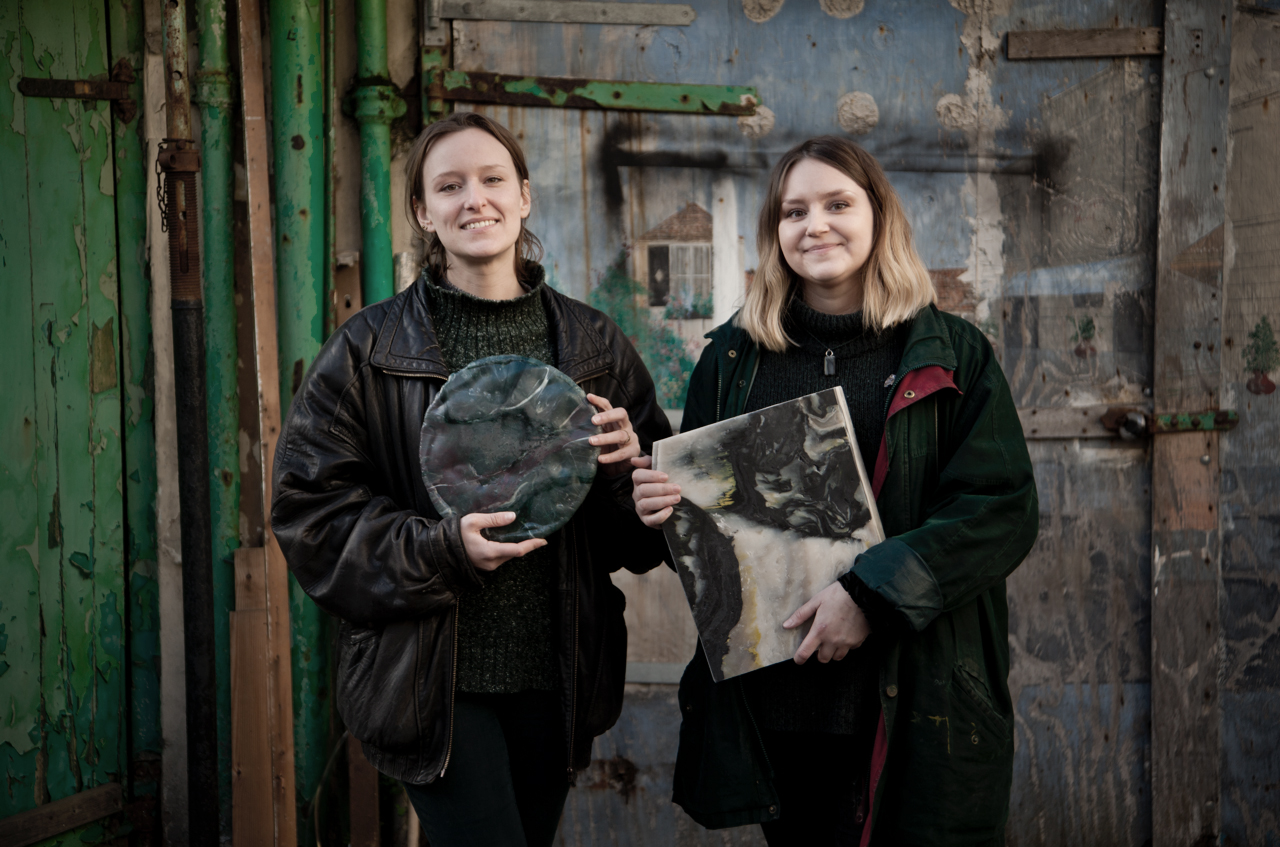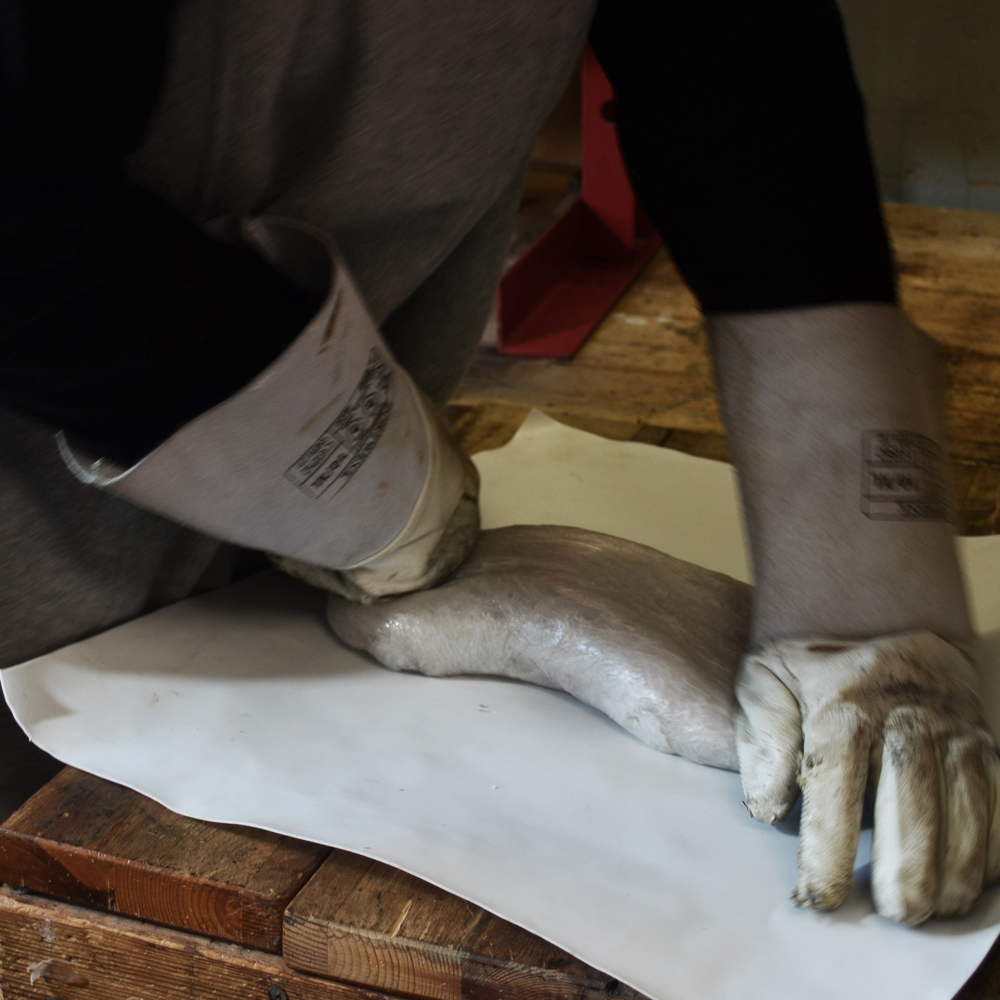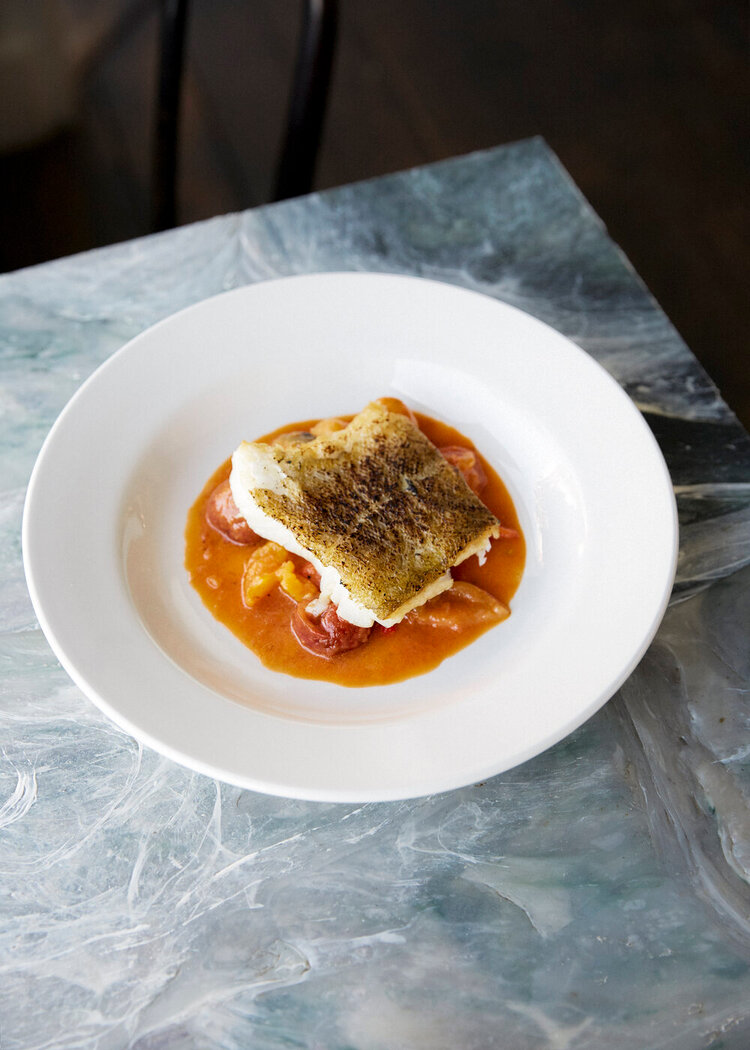Weez & Merl
Hove-based makers Weez & Merl make innovative use of plastic waste, demonstrating just how beautiful it can be in the process. By melting and marbling their medium, founders Louise and Merl make 100% recycled homeware, and work with forward-thinking companies on sustainable solutions – be it bespoke tabletops or specialist surfboard fins. We chat to them about the Weez & Merl process, the challenges of building a sustainable business model and where they find their inspiration.
Louise: I started experimenting with recycled plastics in 2013 whilst at Brighton University, and started my studio in 2015 after graduating. I then spent two years refining my processes and working on commissions with my solo work culminating in designing and building a large hydraulic press capable of producing large sheets of recycled plastic for larger applications of the material. I knew after this period that I did not want to work on my own any longer!
Merl: Louise and I had talked for years about working together, but we weren’t sure how. It was when she took on this huge table top project for Angela’s of Margate in 2017 and needed a lot of help that I got stuck in and absolutely loved it. That’s when we realised that this was our opportunity, and soon after we founded Weez & Merl.
The biggest challenge we have faced has been the production of large sheets of recycled plastic – getting the quality right whilst maintaining the aesthetic of the material is an ongoing and multi-faceted process!
Our greatest highlight was being invited to exhibit at the London Design Festival for their Material of the Year: Plastic – Beyond the Chipper exhibition in 2018. This was a crazy ol’ year, as we had just completed our first fully recycled plastic pieces of furniture, experimented with a new heat-fusing technique and created our first lamp design prototypes. It was unreal to share our work with people at the end of it, and to meet the other amazing artists and makers who shared the same ethos as us.
The colours we use come from plastic bags and sheets we receive that are already coloured – when melted this plastic can then be mixed together to create almost any colour we want, so this offers a huge amount of creative freedom. However, sometimes we have more of some colours than others, so we always try to use what we have an abundance of first so that we don’t run out of anything. We don’t receive a steady supply of any colours, so we try to use them wisely.
Louise: Working by hand with a material that is largely only used in mass production has been wonderfully surprising from the beginning, particularly in how organically it behaves – this is what got me hooked back in 2013. Everything I’d known plastic to be went straight out of the window, and I had to re-frame my thinking around a material that I thought I hated! I realised that it isn’t plastic that’s inherently bad, it’s bad applications that created a negative association for me, and probably has for many people. Working with it by hand allows you to understand its potentials and limitations, just like any maker with their material does, then you’re able to imagine new
things to try and ways to push those limits – that’s the inspiring and fun bit!
We currently work with polyethylene only. However, there are several different densities that we work with, which each have slightly different applications. We do hope to be able to work with different types of plastics in the future though, polypropylene is wasted on a similar scale to polyethylene and it’d be great to put it to use somehow!
There is a growing community of people working with recycled plastic at the moment, enabled largely by the open-source blue-prints for recycling machinery from Dave Hakken’s ‘Precious Plastic’ movement. It has been fascinating seeing what designers and makers all over the world are producing using this technology, and seeing the natural evolution of their work. Even though these recycling processes are different to ours, we’re all very much in the same boat when it comes to working with what may as well be a new material. We take a lot of inspiration from each other’s work and ask each other questions all the time. So, in a way, we’re already collaborating!
We’ve always been inspired by the natural world, especially for colour combinations. We recently created a trio of colourways inspired by the Northern Lights. We noticed that the way the plastic moves and fades was incredibly reminiscent of this natural phenomenon and therefore wanted to highlight this by studying the colours that are commonly seen together in the parts of the world where the Northern Lights occur.
Covid put a halt to our plans of redesigning and building our large hydraulic press early this year, but that won’t stop us. Ultimately, it’s been a good thing to be forced to take some time to reflect on the design even more. This machine will mean that we can continue making furniture designs. In the meantime we are expanding our range of homewares, and we want to train up more people to join our team! We are thinking about taking on apprentices – this is a craft after all, and it takes a serious amount of time to train to make our work. We’re really passionate about craft, and believe that we can really inspire young people to get making.
Louise: There are hurdles all over the place – you have to be stubborn! You do, of course, have to be very committed to the concept, and use your imagination when trying to think of solutions to the random waste you encounter in your business. We receive some materials that are mixed in with the plastic we collect, such as tissue paper, that isn’t a problem as we can reuse this in our packaging, and any we don’t need is easily recyclable. Other things however aren’t as easily solvable, for example silica bead pouches – we haven’t found a solution to what to do with these yet, so we are collecting them until we do!
Merl: Relying on other businesses’ waste material has always posed some unique problems. In particular, how to keep a steady supply. There have been times we’ve collected far too much plastic and not been able to get through it all before needing to collect more from another business – plastic takes up a lot of space before it’s melted down, and so on a few occasions we have been totally surrounded by it in the studio and had to literally melt our way out! We can see the funny side of it now, but it can be a bit of a logistical nightmare.
The infrastructure is just not there yet to support the meaningful recycling of plastics from the home – especially polyethylene and polypropylene. Therefore, however obvious it sounds, avoiding single use plastics is absolutely the first step to take whenever you can. Sometimes it is impossible to avoid it – if you have to shop in certain places for example – and so in these situations you can get in touch with these shops and suggest things like recycling options in store, grain dispensers, and loose fruit and veg. The more pressure these companies get from their customers, the more likely they are to continue to think of solutions. All the major supermarkets have plastic-reducing goals planned, but none have committed to fully phasing it out.
Be wary of compostable packaging as well – unless it says it’s plant based it will still be the same plastic but with compounds added to allow it to break down in commercial composting, so this is not a guilt free alternative! Plant-based plastic, like vegware and potato-starch-based plastic, is great as it’s fully biodegradable, but if it’s not composted it’ll end up in landfill or in the sea, and then it’s pretty much just as bad as if it were non-compostable plastic. So access to composting facilities needs to improve, as well as consumers actually utilising them for this kind of material. We ultimately need systems that work with each other, just like how nature’s systems feed each other and waste isn’t a thing. We can do it, and the ball is rolling now so we should see a lot of change in the next few years.













